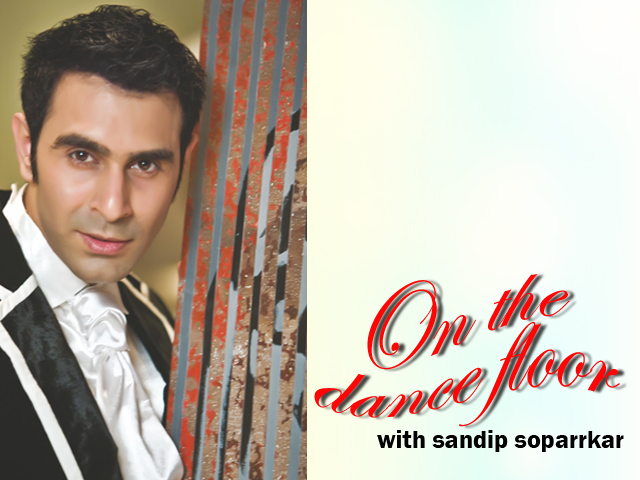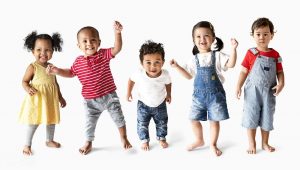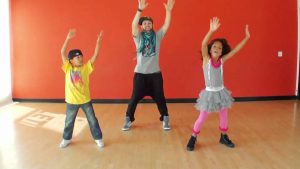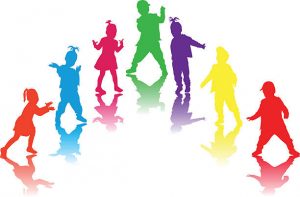Dancing for toddlers

Do you have a little one at home who starts moving as soon as you switch on the radio or the television? Does your bundle of joy keeps hopping when the music is playing in the background? If your answers are yes then you ought to know that your toddler has a dancer hidden within. As a parent, it is our responsibility to discover this artistic side of our little angel and encourage his or her talent. Best is to put your child into a dance class, and see which dance forms your kid likes.
Dance classes are motivating and fun for kids because they love to move. Dancing promotes physical activity, creative expression and free play. Engaging a child in dancing activities increases attention span and supports gross motor coordination and development.
We, at dance schools, have so many children coming to us and we use various ways to make them enjoy and learn at the same time. So if you do not have the time to take the child for a dance class, then best is to do it at home. But do take out some time even if it is thrice a week for about an hour. It will help your child to learn, have fun and also bond with you.
Dance and props
An encouraging way to engage children in a dance activity is to use props. For example, giving children hand drums while asking them to march to a beat is more motivating than simply marching. Using other props like wrist ribbons, bean bags, scarves and shakers are also inspirinational. There are even contemporary children’s songs that encourage the use of instruments like shakers.
Freeze dance
A popular dance activity for children, freeze dance can be done with or without props. It encourages listening and the ability to control impulses. During this activity, ask toddlers to listen to the music, and when the music stops, they must all freeze wherever they are. When the music starts up again, they can begin dancing again. Ask toddlers to follow a leader around in a circle or allow them to move around the room freely.
Imitation and improvisation
Many dances involve following a leader or even imitating animals. Children love to move and act like different animals, and this activity is a great way to teach them about different animals and the sounds and movements they make. Following directions is also a goal of a dance class. A good dance teacher or facilitator always gives clear and concise directions. You, as a teacher, should do the movements yourself so the kids follow. Dance classes are great platforms for creative expression, and encouraging children to make up their own movements as it improves body awareness.
Considerations
Dance classes should contain dances with simple instructions, and the movements should typically have purpose. Movements should be ones children can use in daily life like hopping, galloping, marching, tiptoeing and walking backward. Using opposite words like high and low, forward and backward, and slow and fast are ideal because they give simple directions. Also keep in mind the age group and what motor skills they have already acquired and what movements they are capable of doing.
How to introduce a toddler to dance
Toddlers love dressing up and dancing. Toddlers love to dance, particularly when they can enjoy it with their parents. Dancing allows them to express themselves and burn off energy. Introduce them to dancing while they are young, so they can learn to move their body and truly love dancing. Never rush or push toddlers when introducing them to dance. They may refuse to participate. If you put your child in dance class, you will need to stay with him or her and participate as he or she gains confidence. Include dancing in daily activities to help it feel natural to the child.
Teach your toddler easy dance songs like the “hokey pokey” or other songs with dance actions. Dance with your child. Make dancing time a daily event if you can so your kid learns to look forward to it and enjoy it. Pick him or her up and dance around the room. Advance away from toddler songs by playing music in different genres and dancing together. Show some easy to do fun freestyle moves and shower praise when he or she dances on his or her own. Turn the music on and off and practice dancing only when the music is on. This is a good chance to learn to “freeze” in different poses.
Enroll your child in dance classes designed for their age group. Look for classes with small groups, only allow children in the same age group, and break up the class into many activities. Some classes offer dress-up and dance or have themes like fairy dance. Others may do some crafts or use puppets and dolls for the kids to dance with.
Least we as parents can do is to show our child different styles of dances by playing dance DVDs, YouTube videos or the best would be to take them to see dancers perform live. It will be entertainment for them as well as for us. Look for child-friendly theatre shows with plenty of dancing. The biggest mistake parents make is to take the toddler to see Bollywood movies and when our child develops the filmy expressions in dance and in life, we start complaining. Best is to make them see live dancers perform to fun and educational stories through dance.
Remember dance is a wonderful medium through which a child can learn a lot about culture, tradition, manners, understand his or her own body, get dedicated, sharpen their memory, enjoy, have fun and most importantly, learn to appreciate art which he or she will treasure for life.
Sandip Soparrkar holds a doctorate in world mythology folklore from Pacifica University USA, an honorary doctorate in performing arts from the National American University, He is a World Book Record holder, a well-known Ballroom dancer and a Bollywood choreographer who has been honoured with three National Excellence awards, one National Achievement Award and Dada Saheb Phalke award by the Government of India. He can be contacted on sandipsoparrkar06@gmail.com





